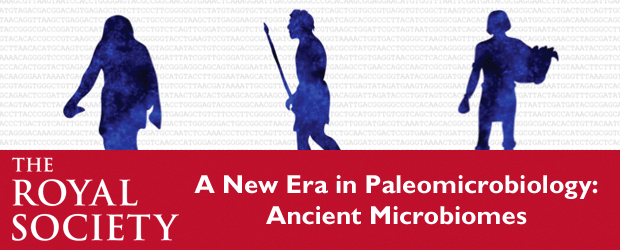Evolution and Ecology of the Gut Microbiome
Focusing on fecal samples from diverse living populations and well-preserved archaeological sites, this study seeks to address fundamental questions about the evolution and ecology of the human gut microbiome.
 The human body contains tens of trillions cells, of which more than half are microbial. These underexplored and mostly nameless microorganisms, collectively known as the human microbiome, weigh about as much as the human brain and harbor an immense diversity of genes that far exceed the functional capacity of our own genome, playing critical roles in digestion, vitamin production, drug metabolism, and immunity. It is becoming increasingly clear that no study of human health or evolution is complete without consideration of our microbial self. And yet, while we have made great strides in revealing the diversity, variation, and evolution of the human genome, we know surprisingly little about the origins and diversity of the microbial portion of ourselves.
The human body contains tens of trillions cells, of which more than half are microbial. These underexplored and mostly nameless microorganisms, collectively known as the human microbiome, weigh about as much as the human brain and harbor an immense diversity of genes that far exceed the functional capacity of our own genome, playing critical roles in digestion, vitamin production, drug metabolism, and immunity. It is becoming increasingly clear that no study of human health or evolution is complete without consideration of our microbial self. And yet, while we have made great strides in revealing the diversity, variation, and evolution of the human genome, we know surprisingly little about the origins and diversity of the microbial portion of ourselves.
Until very recently, nearly all studies of human evolution focused on the fifty percent of our cells and one percent of our genes that we conventionally call human. How has the other half of our cells and 99 percent of our hologenome evolved through time? Moreover, with few exceptions, even studies of the human microbiome have focused almost exclusively on Western industrialized societies, presenting a severe sampling bias that favors affluent metropolitan groups, potentially fostering downstream health disparities for under-represented peoples.
 Focusing on fecal samples from diverse living populations and well-preserved archaeological sites, this study seeks to address fundamental questions about the evolution and ecology of the human gut microbiome, including: How did the primate gut evolve and adapt to climate and habitat changes? Were certain microbes passed down, mother to child, forming a unique aspect of heritability? What role did microbes and their diverse genetic functions play as hominins expanded into new continents and as humans transitioned from low-density bands of hunter-gatherers to dense urban-dwelling populations reliant on industrial agriculture and globalized supply chains? How do gut microbiomes vary today among living populations, and what consequences do these differences have on health and disease?
Focusing on fecal samples from diverse living populations and well-preserved archaeological sites, this study seeks to address fundamental questions about the evolution and ecology of the human gut microbiome, including: How did the primate gut evolve and adapt to climate and habitat changes? Were certain microbes passed down, mother to child, forming a unique aspect of heritability? What role did microbes and their diverse genetic functions play as hominins expanded into new continents and as humans transitioned from low-density bands of hunter-gatherers to dense urban-dwelling populations reliant on industrial agriculture and globalized supply chains? How do gut microbiomes vary today among living populations, and what consequences do these differences have on health and disease?
Related Publications
Wibowo MC, Yang Z, Tierney BT, Borry M, Huebner A, Barajas-Olmos F, Contreras-Cubas C, García-Ortiz H, Martínez-Hernández A, Luber JM, Kirstahler P, Blohm T, Zimmerman S, Smiley FE, Ballal SA, Pamp SJ, Reinhard K, Russ J, Orozco L, Warinner C, Snow M, LeBlanc S, Kostic AD. Reconstruction of ancient microbial genomes from the human gut. Nature, https://doi.org/10.1038/s41586-021-03532-0
Borry M, Cordova B, Perri A, Wibowo MC, Ko WTJ, Yu J, Kagone TS, Meda N, Carabin H, Jacobson D, Honap T, Reinhard K, Lewis CM, Kostic A, Jeong C, Herbig A, Hübner A, Warinner C. (2020) CoproID predicts the source of coprolites and paleofeces using microbiome composition and endogenous DNA content. PeerJ 8:e9001. doi: 10.7717/peerj.9001.
Hagan RW, Hofman CA, Hübner A, Reinhard K, Schnorr S, Lewis CM, Sankaranarayanan K, Warinner C*. (2020) Comparison of extraction methods for recovering ancient microbial DNA from paleofeces. American Journal of Physical Anthropology, doi: 10.1002/ajpa.2397B.
McDonald D, Hyde E, Debelius JW, Morton JT, Gonzalez A, Ackermann G, Aksenov A, Chen Y, Dorrestein PC, Dunn RR, Fahimpour AK, Gaffney J, Gilbert JA, Gogul G, Green JL, Hugenholz P, Humphrey G, Huttenhower C, Jackson MA, Kelley ST, Knights D, Ladau J, Leach J, Melnik A, Metcalf JL, Montassier E, Navas-Molina J, Peddada S, Pollard KS, Rahnavard G, Robbins-Pianka A, Sangwan N, Shorenstein J, Spector T, Thackray VG, Thompson LR, Vasquez-Baeza Y, Wischmeyer P, Wolfe E, The American Gut Consortium, Knight R. (2018) American Gut: an Open Platform for Citizen-Science Microbiome Research. mSystems 3(3): e00031-18. DOI: 10.1128/mSystems.00031-18
Warinner C, Herbig A, Mann AE, Fellows Yates JA, Weiss CL, Burbano HA, Orlando L, Krause J. (2017) A robust framework for microbial archaeology. Annu. Rev. Genom. Hum. Genet. 18:321-356.
Schnorr S, Sankaranarayanan K, Lewis CM, Warinner C*. (2016) Insights into human evolution from ancient and contemporary microbiome studies. Current Opinion in Genetics and Development 41:14-26.
Sankaranarayanan K, Ozga AT, Warinner C, Tito RY, Obregon-Tito AJ, Xu J, Gaffney PM, Jervis L, Cox D, Stephens L, Foster M, Tallbull G, Spicer P, Lewis CM. (2015) Gut Microbiome Diversity among Cheyenne and Arapaho Individuals from Western Oklahoma. Current Biology, doi: http://dx.doi.org/10.1016/j.cub.2015.10.060.

Warinner C, Lewis CM. (2015) Microbiome and health in past and present human populations. American Anthropologist, doi:10.1111/aman.12367.
Obregon-Tito A, Tito R, Metcalf J, Sankaranarayanan K, Clemente J, Ursell L, Xu Z, Van Treuren W, Knight R, Gaffney P, Spicer P, Lawson P, Marin-Reyes L, Trujillo-Villarroel O, Foster M, Guija-Poma E, Troncoso-Corzo L, Warinner C, Ozga A, Lewis CM. (2015) Subsistence strategies in traditional societies distinguish gut microbiomes. Nature Communications 6, 6505.
Warinner C, Speller C, Collins MJ, Lewis CM* (2015) Ancient Human Microbiomes. Journal of Human Evolution 79, 125-136. http://dx.doi.org/10.1016/j.jhevol.2014.10.016
Learn More


